Weddings have been around for thousands of years. Thus, every aspect of a wedding is rich in history, symbolism, and cultural importance. Even the tiniest details have myriad meanings, such as the bridal veil.
If you are unsure whether you can wear a veil if you’re not a virgin, the answer is simple: you can. It is the 21st century; some interpretations of bridal veils are outdated and archaic.
Below is a discussion of the historical meanings of wearing a bridal veil, which may be the roots of doubts and judgment. Afterward, some modern interpretations of wearing a veil are explained. Lastly, some styling tips for bridal veils are also enumerated.
Historical Meanings of Wearing a Bridal Veil
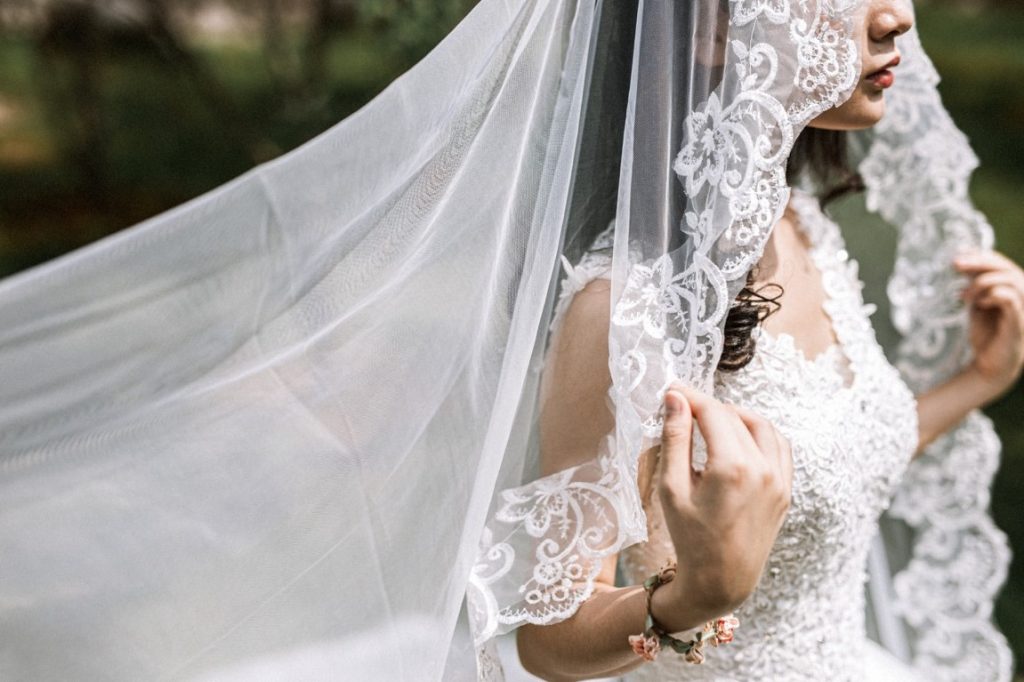
Depending on whom you ask, wearing a veil at a wedding has a different meaning. While veils are present in many cultures, their symbolism varies. This diversity of interpretations is the result of distinct histories.
A well-known historical background is that veils were essential for arranged marriages. Back then, it was common to hear of married couples who first met during their wedding. The bride’s face would be covered with a veil so the groom could not back out of the union in case he found her unattractive.
Alternatively, superstition stated that the groom must not see the bride before their ceremony. If he did, this would bring bad luck to their marriage.
Another historical background comes from the Roman civilization. To protect themselves from misfortune and evil spirits, brides would cover their faces with a veil. The Romans believed that the veil would hide them from opportunistic spirits.
Similarly, brides used to wear veils to conceal themselves from the public. There were cases wherein people stole brides before their wedding. Consequently, brides and her bridesmaids started wearing veils to prevent kidnapping.
Before the 18th century, Western Christian culture viewed veils as a symbol of obedience and demureness before God. This signification is most likely the source of judgment against brides who choose to wear a veil, particularly if it is white.
For 100 years, veils went out of style. The accessory reemerged during the Victorian era when Queen Victoria wore one during her wedding to Prince Albert. However, instead of purity, the bridal veil functioned as a status symbol; the fabric, length, and weight corresponded to the bride’s wealth and social status.
Can You Wear a Veil if You’re Not a Virgin?
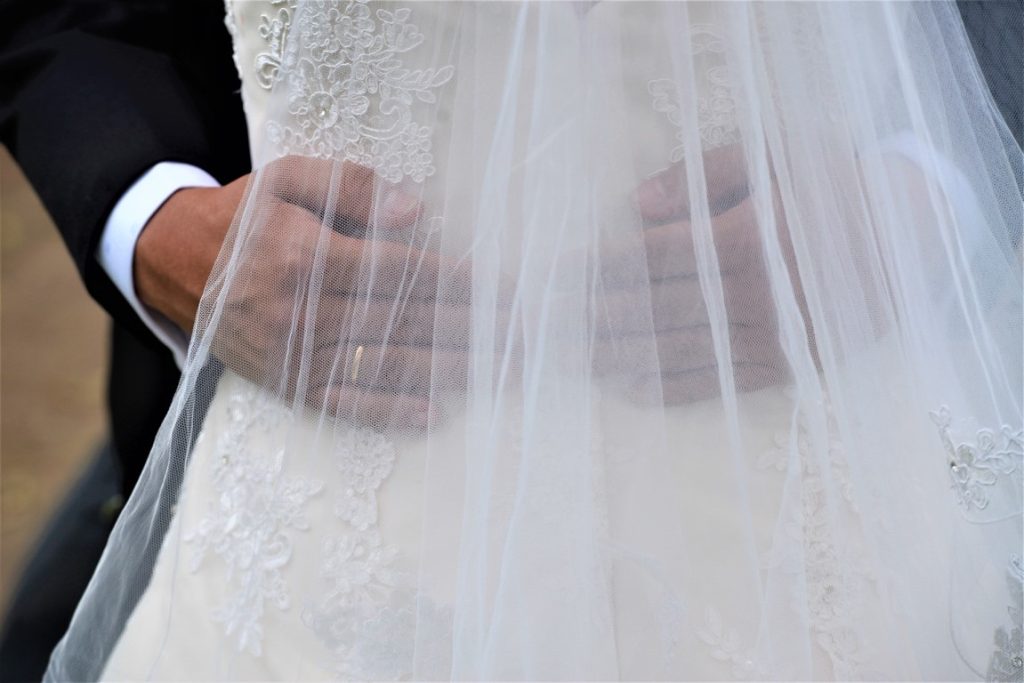
Some people can get stuck in their ways. They might have grown up with a particular ideology and worldview, most of which comes from their upbringing. They can carry these beliefs to adulthood, influencing how they interact with the rest of society.
However, a lot has changed in recent years. For one, women are no longer predominantly considered as their family’s or husband’s property. Moreover, people do not emphasize the concept of virginity as much as before.
In short, wearing a veil is no longer confined to signifying purity or innocence. You can wear a veil without worrying about breaking the rules or misrepresenting traditions. Here are some modern interpretations or incorporations of veils into weddings.
Consummation of the Union
In some cultures, lifting the veil symbolizes the consummation of a marriage. When the groom lifts the accessory and exposes the bride’s face, this act signifies the act of copulation. Specifically, the veil represents the hymen, and the groom’s lifting of the veil connotes penetration.
Beautiful Accessory to a Wedding Dress
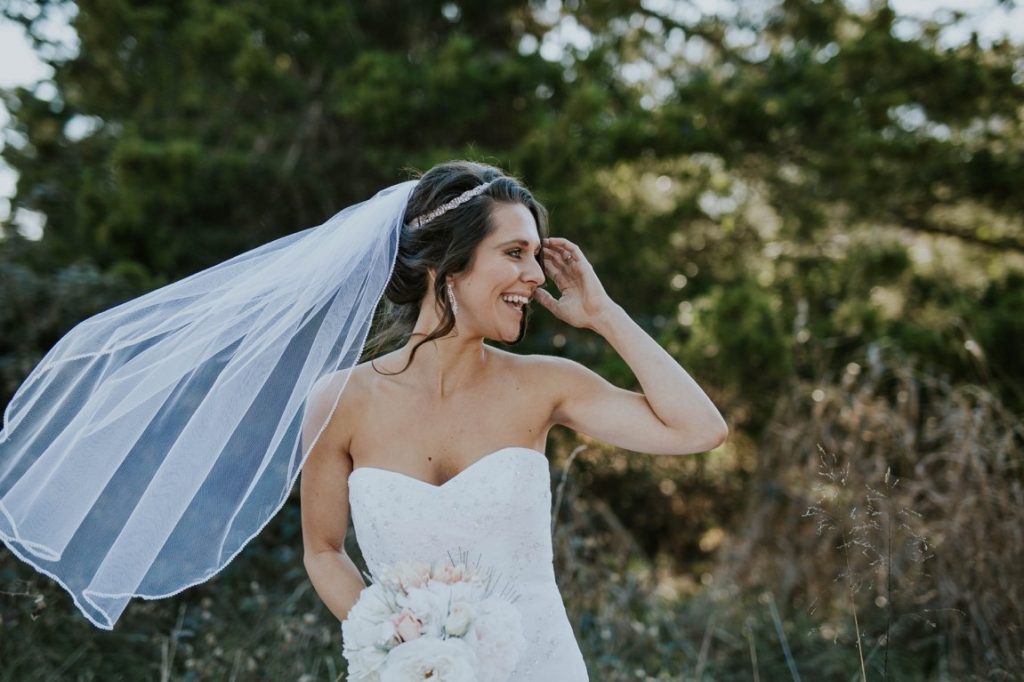
The bridal veil is simply a breathtaking accessory for many brides. They choose to wear one because it adds intrigue to their outfit, and it looks good in pictures.
A Wish for Unity and Security
In some cultures, veils are part of wedding traditions. For instance, Filipino weddings use a lace veil and white cord for a unity ceremony. Someone from the bridal entourage — usually one groomsman and one bridesmaid — drapes the veil over the couple while another pair wraps a cord around the couple’s shoulders.
This unity ceremony occurs after the exchange of rings, and it symbolizes the coming together of two people into one union. The veil is a representation of this togetherness, while the cord signifies equality and loyalty.
Tips for Wearing a Veil to a Wedding
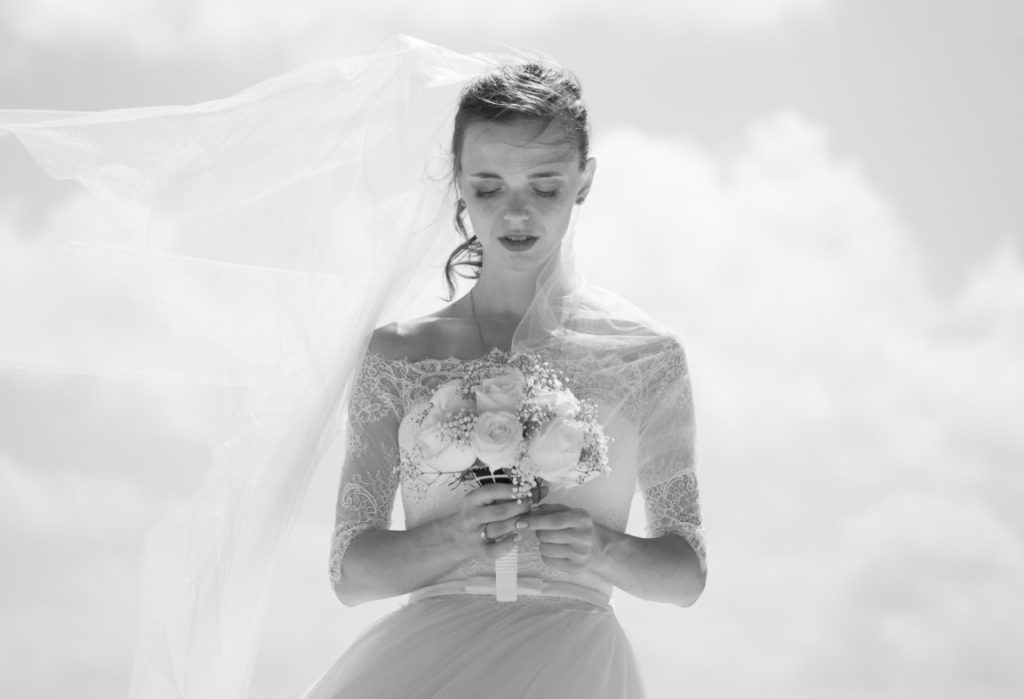
Choosing the Style of Your Veil
The length and placement of the veil affect its aura. Short veils can look modern, fresh, and quirky. Oppositely, longer veils feel more sophisticated and intriguing. Blushers, or veils that cover your face, appear traditional.
Here are several types of veils you can consider adding to your outfit:
- Flyaway → is a short, shoulder-length veil with multiple layers. You can choose to position it on the back or along the side of your head. This type is excellent for more informal weddings.
- Blusher → covers the face of the bride. The blusher can be a separate veil of any length or attached to a longer veil.
- Elbow → ends exactly around your elbows. Usually, these veils are around 28 to 36 inches long. This type works best for casual ceremonies.
- Fingertip → brushes along your fingertips. Due to its style, a fingertip veil gives the illusion of a cape. This type is well-loved, partly because it frequently shows up at royal weddings.
- Ballet → ends between the ankle and calf. This style is also known as a waltz veil or a walking veil. You may pair it with a blusher.
- Chapel → is a long veil with a few inches dragging along the floor. This style is sometimes called a “sweep” veil.
- Cathedral → is longer and more dramatic than the chapel veil. One foot to five yards of excess fabric trails the bride as she walks.
Alternatives to a Bridal Veil
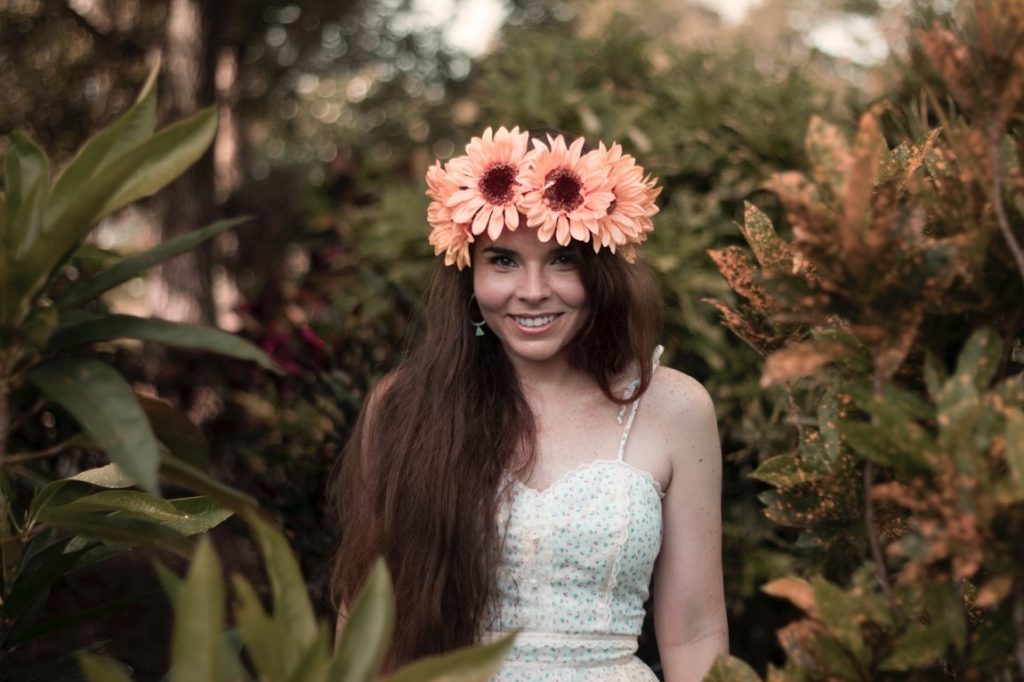
Even if you now know that you can wear a veil if you’re not a virgin, you might still want an alternative to the accessory. You have many options for headpieces that will make an impression on your guests:
- Headbands. Headbands are a simple but gorgeous accessory to add to your wedding outfit. They are also practical, as they can keep your hair smooth even through strong winds.
- Flower crown. Flower crowns are versatile accessories; they are perfect for summer, spring, and fall weddings. Moreover, this headpiece is an excellent choice for casual, rustic, and boho weddings.
- Hairpins. If you want a subtler accessory, hairpins are a splendid choice. There are endless options for personalization. Like headbands, hairpins also double as a practical piece to keep your hair in place.
- Hats. Hats are a well-loved fashion statement, especially for weddings. You can choose a wide-brim hat, a fascinator, or another type of hat that suits you.
When to Wear Your Veil
Typically, brides wear their veils throughout the ceremony. However, you can put it on for the entire day. You can wear it to your first look, the portrait session, and into the reception. There are no rules — don your veil as much as you want.
Use Hairspray on the Veil
One thing brides worry about when wearing a veil is getting the fabric on their lips. To solve this, spray some amount of hairspray onto the veil. Doing so will make the veil stiffer than it is, staying away from your face.
Lifting the Wedding Veil
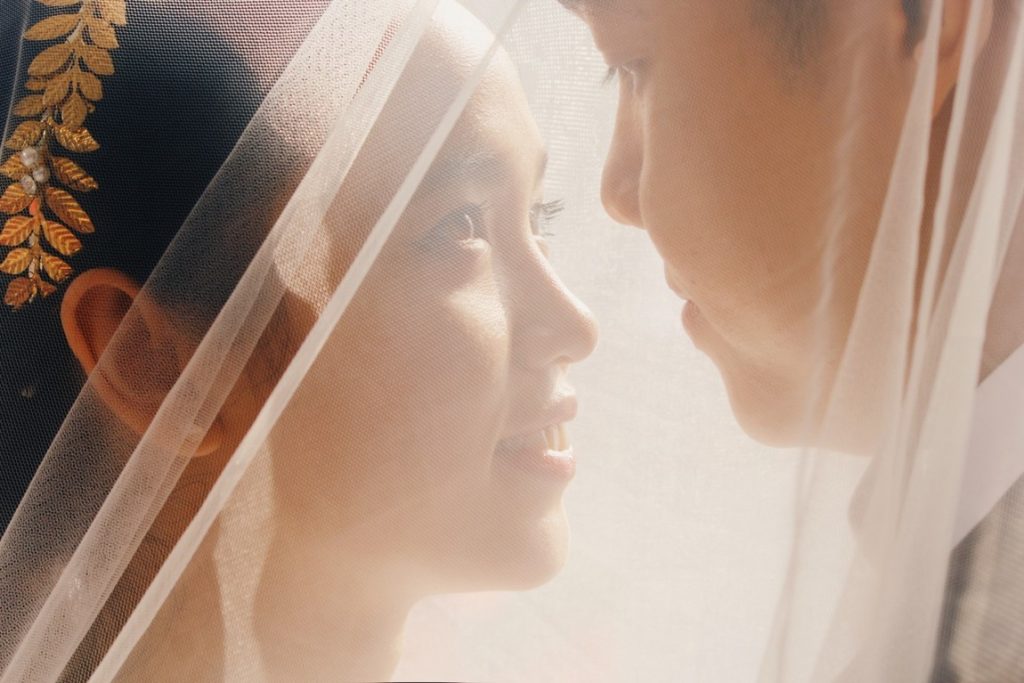
You have three options for who should lift your wedding veil during the ceremony: your father, your groom, and yourself.
If you choose your father, he can lift your blusher veil after he escorts you down the aisle. He will kiss you before going to his seat. For some brides, this act is part of a modern alternative to the “giving away the bride” tradition. Regardless, lifting the blusher early allows you to see the entire ceremony clearly.
On the other hand, grooms typically lift the bridal veil during the pronouncement. This part of the wedding occurs after the exchange of vows. Before your groom kisses you to make the marriage official, he will raise your veil.
Keep in mind that you can also lift your veil yourself. Typically, brides who choose this option remove their veils before exchanging vows. They would hand their bouquet to the maid of honor and proceed with the ceremony.
Final Thoughts
So, can you wear a veil if you’re not a virgin? To reiterate: yes, you can wear a veil even if you’re not a virgin. Although its traditional meanings might have been retained in some groups or areas, you do not have to listen to them. You can wear a veil because it has personal significance, or you can wear it simply because you find it lovely.